
Revolt of Thomas the Slav |
year: 821-823 |
| A major military revolt and siege of Constantinople for over a year | ★ ★ ★ ★ ★ |
|
enemy: Civil War
|
location: Constantinople
|
accuracy:
●●●●●
|
|
battle type: Siege |
war: Military Revolts |
modern country:
Turkey |
| ▼ The Byzantines(emperor: Michael II the Stammerer) | ▼ The Enemies | |
| Commander: | Emperor Michael ΙI | Thomas the Slav |
| Forces: | 35,000 | 80,000 |
| Losses: |
| Background story: |
| Thomas the Slav, was a Byzantine army officer born in northeastern Asia Minor, in the 760s to a poor peasant family of Slavic descent. He joined the army where he quickly made a career. He was a protégé of the eminent military Bardanes the Turk, who was a general on the Anatolikon thema. Among Bardanes’ confidants were also Leo the Armenian and Michael Psellos (the stammerer), with whom Thomas was in close friendship. In 803, when he had the title of spatharios, he was one of the officers who supported the mutiny of Bardanes the Turk. Bardanes tried to overthrow the emperor Nikephoros I, but failed when his two main supporters (and later emperors) Leo the Armenian and Michael Psellos abandoned him and supported the legitimate emperor. 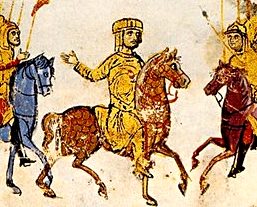 Thomas the Slav There are various theories as to the reasons for Thomas's rebellion, but the most probable reason was Thomas's personal ambition to become emperor (like his two friends), taking advantage of the displeasure in the army over the assassination of Leo V. Thomas also took advantage of the fact that Michael was an iconoclast, while he himself was in favor of icons. 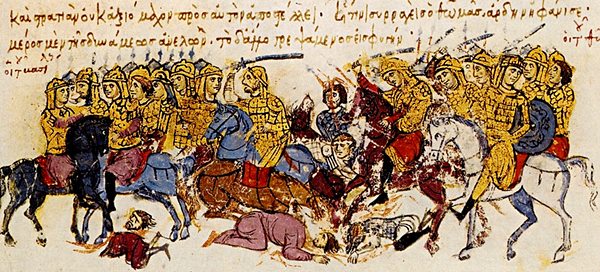 Thomas troops defeat the imperial army, from the Madrid Skylitzes. After these preparations, and having with him almost 2/3 of the subjects of the Byzantine Empire, Thomas marched against Constantinople, passing from Abydos at the Asian coast to Europe with the help of his fleet. 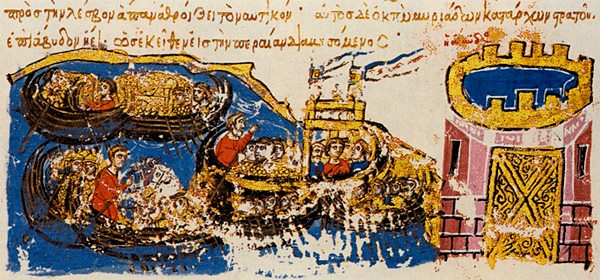 Thomas and his fleet cross from Abydos to Thrace. Miniature from the Madrid Skylitzes |
The Battle: |
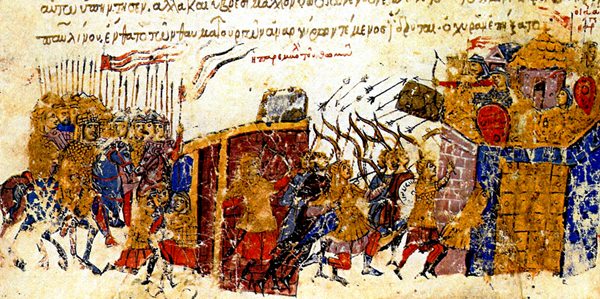 Thomas and his army besiege Constantinople from the Madrid Skylitzes Thomas expected the people of Constantinople to support him and help overthrow Michael, but this did not happen. The sight of his huge force did not intimidate the capital's inhabitants: unlike the provinces, Constantinople and its garrison stood firmly behind Michael. To encourage his troops, Michael had his young son Theophilos lead a procession along the walls, carrying a piece of the True Cross and the mantle of the Virgin Mary. After subduing the cities around the capital, Thomas concentrated on Constantinople where he launched a general attack from three sides. He led personally the attack in the northwestern part of the land walls, in Vlachernae. But even though the attackers were many more and had siege engines and Geek fire throwers, all the attacks failed, while the opposite winds prevented their ships from approaching the weak walls on the side of the Golden Horn Bay. Realizing that the siege was not to end quickly, especially in the middle of winter, Thomas suspended operations and withdrew his army to spend the rest of the winter in Thrace, not far from the city. Emperor Michael took advantage of the break to bring reinforcements from Asia Minor and to repair the walls. In the spring Thomas' army returned and encamped again outside the city. He choose to focus his attack on the Blachernae sector. Before the offensive, Michael himself ascended the walls and addressed Thomas' troops, exhorting them to abandon their commander and promising amnesty if they would defect. Thomas' army viewed the plea as a sign of weakness, and advanced confidently to begin the assault, but as they neared the wall, the defenders opened the gates and attacked. The sudden onslaught drove back Thomas' army; at the same time, the Imperial Fleet defeated Thomas's ships, whose crews broke and fled to the shore in panic. This defeat diminished Thomas's naval strength, and although he continued blockading the capital by land, the loss demoralized his supporters, who began defecting. These developments, although they did not turn the balance of power, lowered the morale of the rebels. But Thomas was not intimidated and asked his supporters in Asia Minor for reinforcements and new ships. The response was fast and a new fleet of 350 ships soon arrived in Constantinople. 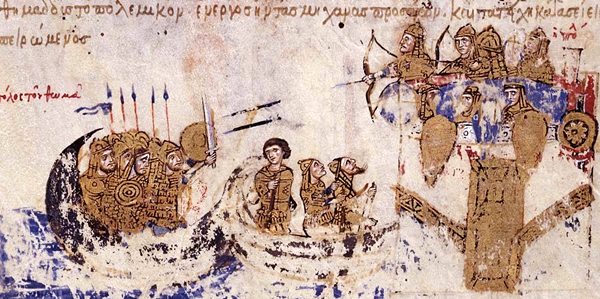 Repulse of the attack of Thomas's fleet on the seaward walls Through this victory, Michael secured control of the sea, but Thomas's army remained superior on land and continued its blockade of Constantinople. Emperor Michael turned to the empire's northern neighbor, Bulgaria, for help. The two states were bound by a 30-year treaty signed under Leo V. The Bulgarian ruler, khan Omurtag was happy to respond to Michael's request for assistance. The Bulgarian army invaded Thrace, probably in November 822 and advanced towards Constantinople. Thomas raised the siege, and marched to meet them with his army. The two armies met at the plain of Kedouktos near Heraclea. It is not clear who won the battle. Thomas was probably victorious but his army suffered heavy losses. Thomas was unable to resume the siege: aside from the heavy casualties in the battle with the Bulgarians, his fleet, which he had left behind in the Golden Horn, surrendered to Michael during his absence. Thomas set up camp at the plain of Diabasis some 40 kilometers west of Constantinople, spending winter there. While a few of his men deserted, the bulk remained loyal. 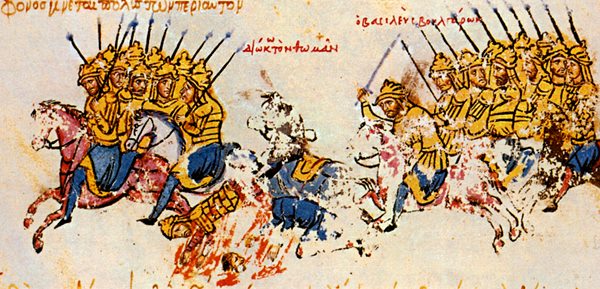 The Bulgarians under Omurtag attack Thomas's army. Miniature from the Madrid Skylitzes. In late April or early May 823, Emperor Michael took the initiative and marched against Thomas with new troops from Asia Minor. Thomas tried to confront them but his demoralized men would not follow. Many surrendered to Michael, while others fled to nearby fortified cities. Thomas sought refuge in Arcadiopolis with the remains of his army; his adopted son Anastasius went with some of Thomas's men to Bizye, and others fled to Panion and Heraclea. Thomas was besieged for 5 months in Arcadiopolis. The city was not ready for a siege and suffered. At the end, in October 823, the townspeople themselves handed over Thomas to Emperor Michael II. Thomas was sentenced to death. His arms and legs were amputated and then he was impaled. |
Noteworthy: |
| Byzantine historians, being biased in favor of Michael, paint a black picture of Thomas, telling various outrageous stories. One of these stories was that in his youth Thomas spent 25 years in the service of the Saracens. Another bizarre legend was that Thomas presented himself as the late emperor Constantine VI and had persuaded his followers about it. |
Aftermath: |
| Hundreds of uprisings and revolts took place in the history of Byzantium. The revolt of Thomas the Slav was the most serious. It bacame a major civil war and had significant consequences. Both the army and the fleet were dramatically weakened, while the enemies of Byzantium benefited in various ways. It is no coincidence that shortly afterwards the Arabs landed in Sicily and Crete, leading to the loss of two important provinces of the empire. |
|
|
